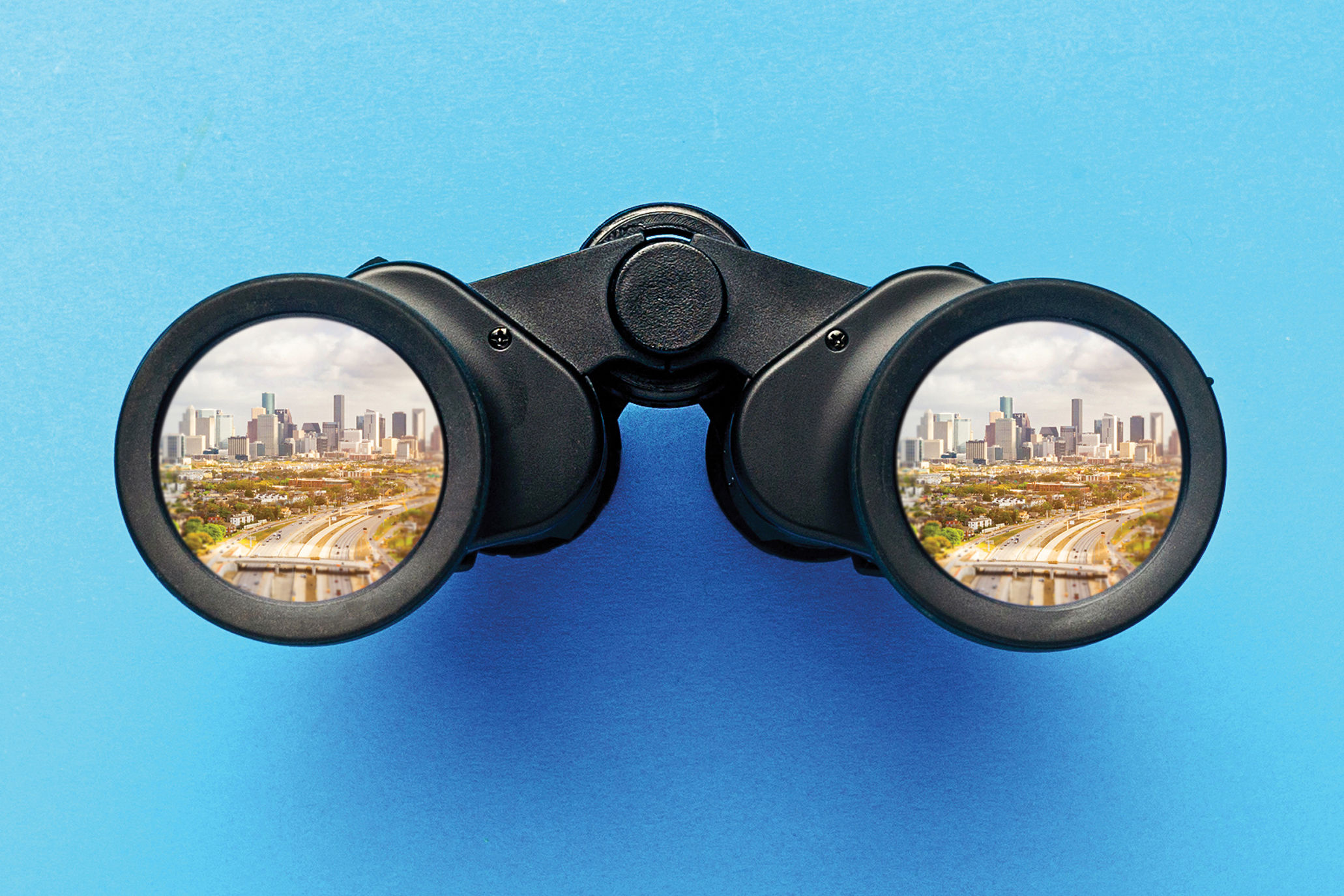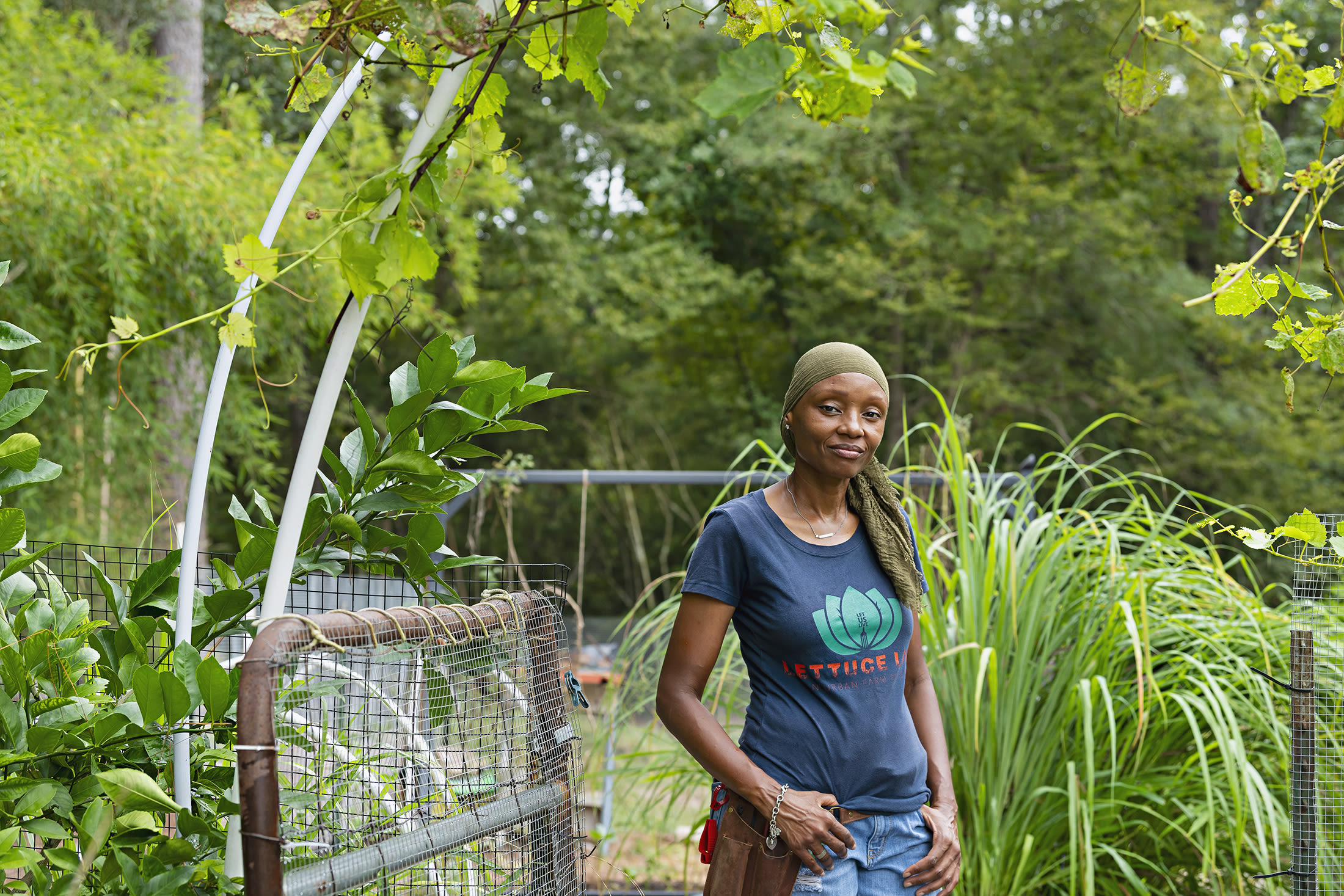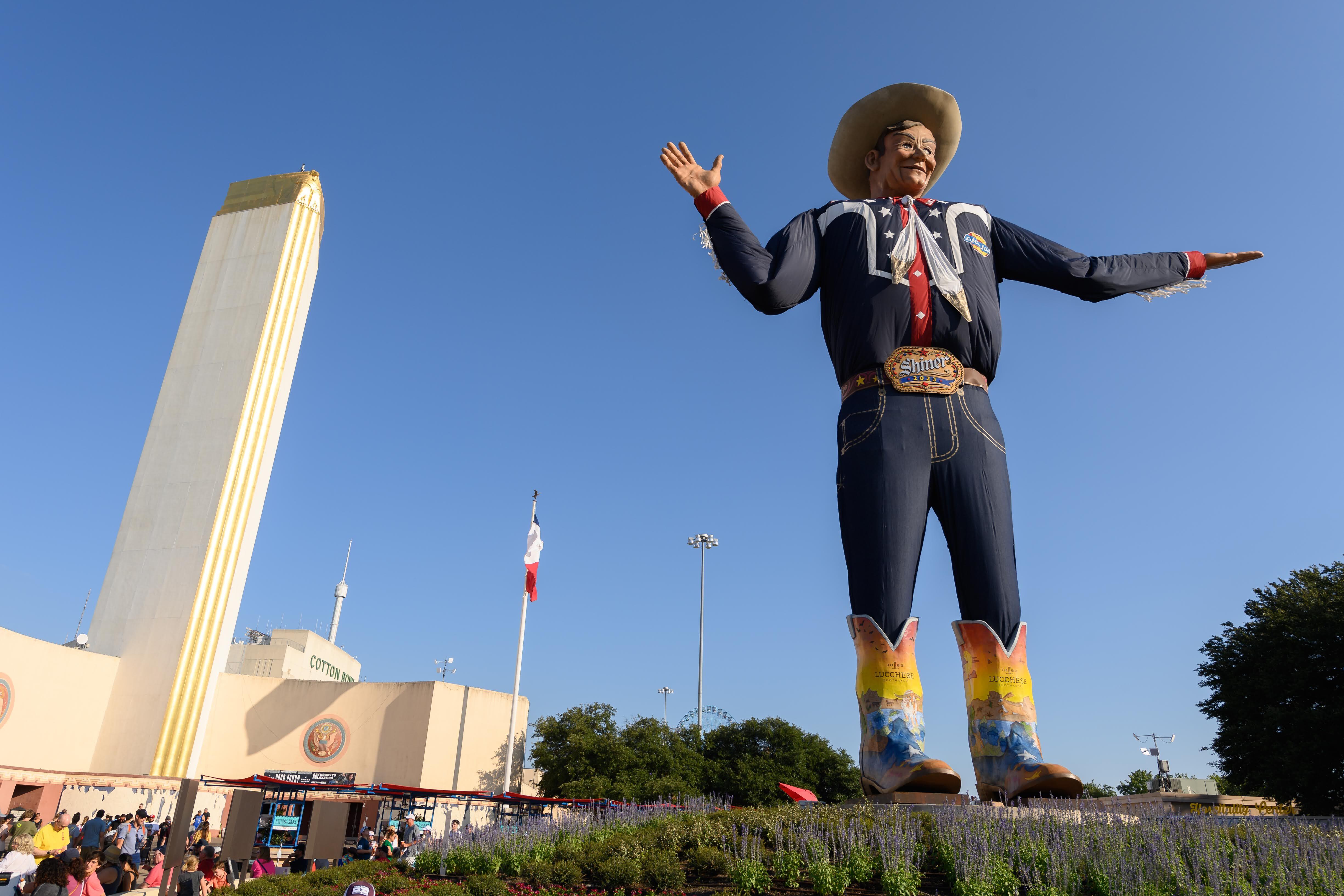The Houston Rodeo Parking Lot Is a Window into the City’s Land Use

RodeoHouston's 610 Lot is huge, but stays vacant most of the year—just one in many examples of parking land use in Houston.
Image: Anthony Rathbun
You’re right to wonder. Let’s say you’re one of the 75,000 people moving to Houston every year. One day, because it’s Houston, you get confused on Loop 610 and drive past NRG Park. On the opposite side of the freeway, you’ll notice… well, nothing. Behind chain-link fences that guard strips of grassy stormwater ditches lies an expanse of concrete so deep you can’t see to the end of it. Is it some kind of levee? Shouldn’t there be hotels and shops and restaurants? Maybe a theme park?
Fittingly, the lot, an approximately 100-acre urban, er, pasture, is owned by the Houston Livestock Show and Rodeo (HLSR). You might know it as the “610 Lot” you park in before walking or shuttling over the bridge to the fairgrounds. Chief strategic planning officer Peter McStravick calls the rodeo “a longtime tenant” and “contributor” to the value of the former Astrodomain complex, masterminded here in the mid-1960s by then-Harris County Judge Roy Hofheinz. All this grass is where the beloved theme park AstroWorld used to be until its owner, Oklahoma-based Six Flags, saw property values and taxes rise and attendance fall before shutting it down and selling it off for good in 2005. One reason for the sale, the Six Flags CFO told the Houston Chronicle at the time, was parking. Still, “Kirby and 610, that’s a great address in Houston,” a vice president at Colliers International told the reporters. “Something of that size will probably become a mixed-use development.”
It has not.
Since 2012, when HLSR acquired the land, the 610 Lot has been used by the public only a few weeks annually during the festivities in February and March, and as storage during the rest of the year. Attendees of the barbecue cookoff, concerts, and other activities come here from miles away to leave behind up to 2,000 cars every day, part of the 26,000 available parking spaces inside NRG Park. McStravick says “the rodeo understands the value” of the land, which is served by Metro’s high-frequency Red Line and the Fannin South Transit Center and located on a high-visibility frontage road. But it’s most likely to stay the way it is, he says, until the current lease with the Harris County Sports and Convention Corporation to host the rodeo there expires in 2032—one more void in a city that can feel full of nothing much at all.
Houston has so many gaps like this one because we need to put our cars somewhere the 95 percent of the time we’re not using them. Even downtown, which is one of only three neighborhoods free of the city’s off-street minimum parking requirements, is more than 26 percent parking. (The others, as of 2019, are Midtown and East Downtown.) How did this happen? As the city grew more developed and dense, and parking more contentious, some Houstonians expressed resentment about others who dared to leave a car next to the curb in front of their houses or businesses, Margaret Wallace Brown, the city’s planning director, told me. These spots do not and have never belonged to anyone—they belong to everyone—but Houstonians are no less territorial than any other urban animal. And they wanted to know: what was the city going to do about it?
Off-street requirements became official in 1989. City code now directs “all persons developing new and redeveloping existing buildings or tracts within the city to provide sufficient off-street parking and loading facilities at all times the buildings or tracts are in use or occupied.” If you want to build a bowling alley in Houston, you have to provide five parking spaces for every lane. If you want to open a daycare, it’s one space for every employee, of course—and one for every five children in attendance.
Sorry, those are the rules. The need to make room for parking, Henry Grabar writes in the 2023 book Paved Paradise, is what makes our cities—I’ll be kind—inconsistently hospitable. “It drove up the cost of housing and pushed everything apart, and it still sat mostly empty most of the time,” Grabar writes. Parking “has become the organizing principle of American architecture,” he adds, “from the design of the strip mall to office towers that sit like sculptures atop their garage pedestals to the house itself, where the garage is often the largest room and the dominant feature of the facade.”
Parking makes cities harder and hotter, covered in pavement that exacerbates flooding and radiates heat. In Rice University’s annual Kinder Houston Area Survey, a majority of Houstonians have been saying for years that they don’t want to live in that kind of city. “We recognize that parking is not the thing that brings people somewhere,” says David Fields, the city’s chief transportation planner. “You don’t say, ‘I love Houston because I can park downtown.’”
Still, you absolutely can park downtown. Parking is everywhere. In early October, I was walking on Austin Street, a typically stressful, dangerous experience of chunked-up sidewalks between curb cuts alongside two, three, four lanes of clattering traffic. When you leave Buffalo Bayou Park, the first four blocks to the south on Austin are surface parking lots and a garage, which means that much of the time they are empty, waiting. Their usefulness is useless. On La Branch, one street over, there are three surface lots in a row.
But there’s also a new two-way dedicated bike lane on Austin all the way from here to Hermann Park, and it was weird to stand between them both at the same time: the Houston where you’ve had no choice but to drive from parking lot to parking lot and the Houston where you’re being given more and more choices every year.
“Our long-term view on parking is our long-term view of a multimodal city,” Fields says, referring to the many ways to get around, from biking to riding public transit. “The more access with different modes we provide, the less we need to rely on any one of them.”
I’m trying to be patient. I’m trying to see the city’s voids of parking and accidental pastures like the rodeo’s 610 Lot the way I see construction cranes. They’re ugly, but they’re reminders we’re still in the process of making progress—and nowhere is finished, not even Houston.




